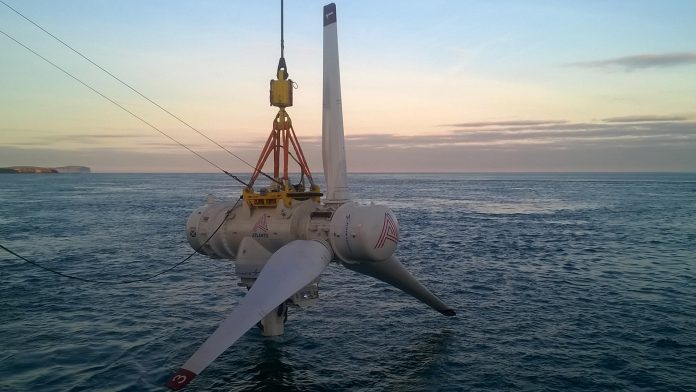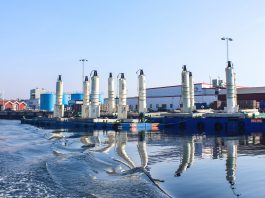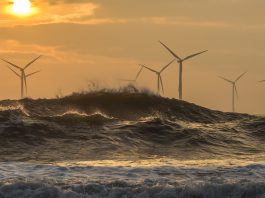Ocean Energy Europe’s Policy Director, Donagh Cagney, discusses what needs to be done for ocean energy to achieve its potential in Europe’s carbon-free future.
In Europe, the ocean energy industry plans to deploy 100GW of production capacity by 2050, meeting 10% of electricity demand – enough to meet the daily electricity needs of 94 million households. Given that European companies are the clear global leaders in ocean energy, the deployment of this 100GW of ocean energy will help to create a new industrial sector based firmly in Europe, putting EU companies in a prime position to capture a global market estimated to be worth €53bn annually in 2050.
Ocean Energy Europe is the largest network of ocean energy professionals in the world. Over 120 organisations, including Europe’s leading utilities, industrialists and research institutes, trust OEE to represent the interests of Europe’s ocean energy sector.
The Innovation Platform’s International Editor Clifford Holt spoke to OEE’s Policy Director, Donagh Cagney, about what needs to be done for ocean energy to achieve its potential.
What role can ocean energy play in Europe’s green and sustainable future? What is needed for the sector to be able to keep pace with more established areas such as wind?
Ocean energy can help deliver a cleaner, more prosperous, and more equal Europe. It will deliver decarbonised power and allow greater deployment of other renewables like wind and solar. It has no significant impacts on local marine environments, and because these are new technologies, circularity can be designed into machines and material from the very beginning.
The annual market is estimated to reach €53bn by 2050, and European industry is extremely well placed to dominate all parts of the value chain, including design, manufacture, operation, and ancillary services.
Deploying 100GW will create 400,000 quality jobs, encompassing a wide range of skill types and levels. Many of these jobs will be close to the ocean resource – creating opportunities in coastal communities that have been hit by the decline of traditional sectors like shipbuilding, fisheries, and (imminently) offshore oil & gas.
In short, ocean energy is the embodiment of the European Green Deal.
To keep pace with the wind sector, wave and tidal energy just need the same opportunities that wind energy had. This means support getting the first larger deployments in the water and sending a clear signal to investors about the future market. This will allow ocean energy to kick-off the same virtuous cycle of cost reduction and increased deployment that drove wind energy’s success.
And we must not forget that wind and wave complement each other. They can share the same infrastructure, and when combined they provide smoother and more predictable power. So, more wind deployments will facilitate more wave deployments, and vice versa.
17 major ocean energy projects are already in progress, representing over 160 MW of clean energy and €1.2bn of investment. What needs to be done to ensure they actually come to fruition? How can the ‘Target 2025’ study help?
In its European Offshore Renewable Energy Strategy, the European Commission commits to co-ordinating with national and regional funders to get 100MW of ocean energy in the water by 2025.
This funding co-ordination is critical – without grants, financial instruments and, most importantly, revenue support from national governments, many of these projects won’t hit the water.
To facilitate this co-ordination, the ‘Target 2025’ study clearly sets out which projects can be deployed by 2025 and identifies the exact funding gaps that need to be filled for each project. Essentially, the study maps out the landscape, and makes it as easy as possible for authorities to identify the projects to co-ordinate on and the funding gaps to fill. In the context of renewable energy projects, 2025 is just around the corner – so a speedy implementation is essential. The study will help authorities hit the ground running!
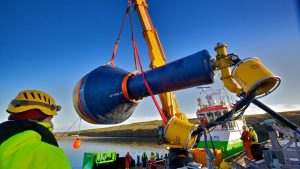
How would you like to see ocean energy be included/focused on in national Recovery and Resilience Plans (RRPs)?
The Recovery & Resilience Plans represent an excellent opportunity for countries to simultaneously boost economic activity in the short-term and strengthen their competitive position and decarbonise in the medium-term. We know that the market for wave and tidal energy is global, and that Europe is already the world leader. Countries that use Recovery Funds smartly can deploy the first ocean energy farms at scale. This will allow them to secure first-mover advantage and take a big chunk of a market that is estimated to be worth €53bn per year by 2050.
So far, Spain and Italy’s Plans seem to be the most oriented towards offshore renewables. But the funds will take time to disburse, and there are plenty of decisions still to be made – so we may still see other countries like Portugal, France, or Ireland taking the lead.
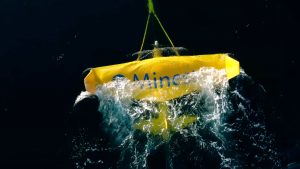
What are your thoughts on initiatives such as the proposed 10 MW wave power park in Audierne Bay, France, which could be Europe’s first grid-connected utility-scale wave energy park? How would you like to see other such activities evolve?
The Audierne Bay project, developed by Seabased, is a good example of ocean energy’s next stage of development – modest utility-scale commercial deployments to de-risk the technology and to bring down costs. Projects like this one will pave the way for the hundreds of MWs and GWs of deployments that the sector is capable of delivering.
It is no coincidence that the project is planned for the Brittany region, which is active in several ocean energy initiatives and which hosts one of Seabased’s suppliers. The region sees the economic and industrial potential of the sector and knows that most of these advantages will go to those regions who move first.
Such initiatives are being replicated at various sites in the Atlantic and Mediterranean, with regions often leading the way. But national and European level support is critical if these projects are to secure the necessary public and private financing. This is the strength of the 2025 target in the European Offshore Renewable Energy Strategy – it targets exactly the right scale of projects and it focuses on co-ordinating all the relevant authorities who can make these projects happen.
In light of the Fit for 55 package, what needs to be done to boost innovation and time to market when it comes to ocean energy-related technologies? How would you like to see this being approached?
Fit for 55 has some exciting and ambitious proposals and can really provide the foundations for Europe’s drive to Net Zero. But, unfortunately, innovation in renewables is one of the package’s weaker points.
The 2030 renewables and emission-reduction targets mean that national governments are more incentivised to deploy massive amounts of mature technologies and less incentivised to work on the innovative technologies that we will need post 2030 – like ocean energy.
The Renewable Energy Directive is a piece of European law that requires national governments to meet targets for the deployment of renewables in their territory. It is being revised to increase the 2030 target. This revision is an opportunity to include an extra 2030 target – which is focused exclusively on the deployment of innovative renewables.
This additional target would make sure that national governments deploy mature renewables and scale-up emerging renewables at the same time, such as concentrated solar, deep geothermal, or indeed ocean energy. This will ensure that these innovative technologies are cheaper and de-risked for when they are needed post-2030.
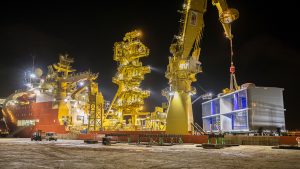
Where do you feel there is most potential regarding innovation in wave and tidal technologies?
We are very excited by the potential for digitalisation to optimise wave and tidal technologies. This can drive costs down even further and allow extra power (and revenue) to be generated from each machine.
For example, there are several projects underway that will create ‘digital twins’ of ocean energy devices. These are computer mathematical models of the real-life machines and are based upon a huge volume of data from sensors that are attached to live devices in the ocean. Machine Learning is used to better predict how the turbines will perform and to optimise maintenance regimes. In particular, these digital twins can help maintenance become more pre-emptive – i.e. an intervention is made before the problem actually occurs, so the device is running and generating revenue for much more of the time.
A similar approach is being used to optimise power generation. Sensors and Machine Learning are helping both wave and tidal devices to anticipate future water states (sudden changes in tidal flows or the incoming waves, for instance). The device’s control systems can then kick in to make sure that as much energy as possible is being extracted from incoming flows and waves. One wave developer is basing its approach on neuroscience know-how. Their algorithm builds on models of how the human brain processes sound waves – and applies it to the waves of the sea!
With ambitious renewable energy and decarbonisation targets and deadlines looming, what is your vision for the future of ocean energy?
Simply put, our vision is for a decarbonised world, with a massively expanded and renewables-based power system in which ocean energy plays a cornerstone role.
We know that a lot more will be asked of future electricity systems in terms of powering transport and heating and cooling. We know that existing fossil fuel generation needs to be completely replaced. We know that different regions of the world have different sources of renewable energy. And we know that diversity of renewable power will help balance this massive power system that we are building. We also know that new technology cannot just be carbon-free – it has to work for people and for local environments as well. Ocean energy delivers on this – it has a negligible or non-existent visual impact, and it works in harmony with its natural surroundings.
Given all of these knowns, it is very hard to envisage a future without ocean energy.
For the next decade, Ocean Energy Europe recently released it’s ‘2030 Vision’ which foresees just under 3GW of wave and tidal deployed, and a cost reduction to €90/MWh for tidal and €110/MWh for wave.
92% of this will be deployed in European waters. This will set the stage for the massive scale-up of ocean energy and even further cost reductions through the 2030s. See here for more information.
Donagh Cagney
Policy Director
Ocean Energy Europe
+32 2400 1047
d.cagney@oceanenergy.eu
Tweet @OceanEnergyEU
www.oceanenergy-europe.eu
Please note, this article will also appear in the seventh edition of our quarterly publication.

